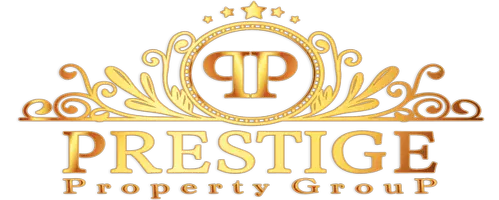Donald Trump Highlights Housing Crisis in RNC Speech—but Exaggerates Key Pain Points

Photo-illustration by Realtor.com; Source: Getty Images (3)
In his lengthy speech accepting the Republican presidential nomination on Thursday, Donald Trump touched on dysfunction in the housing market as he pressed his case to replace incumbent President Joe Biden.
Tying rising housing costs to inflation, a lingering weakness for Biden, Trump exaggerated several statistics even as he described the nation’s real housing affordability crisis.
“Under this administration, our current administration, groceries are up 57%, gasoline is up 60% and 70%, mortgage rates have quadrupled, and the fact is, it doesn’t matter what they are because you can’t get the money anyway. Can’t buy houses. Young people can’t get any financing to buy a house. The total household costs have increased an average of $28,000 per family under this administration,” said Trump.

Hannah Beier/Bloomberg via Getty Images
All of those figures are overstated, although they are directionally correct and point to real pain for consumers after years of rising prices, housing costs, and interest rates.
Trump’s campaign has offered few specifics on how he’d lower housing costs if elected. But his increasing attention to the issue could be an early sign of how he plans to counterattack Biden, who has made housing a signature issue of his campaign after calling for national rent caps and accusing Republicans of siding with “corporate landlords.”
“We appreciate the ongoing inclusion of housing and homeownership in national political discussions,” says Realtor.com® senior economist Ralph McLaughlin.
The Republican Party’s 2024 platform even lists “housing affordability” first under a section devoted to “bringing back the American dream.”
The platform reads: “To help new home buyers, Republicans will reduce mortgage rates by slashing Inflation, open limited portions of Federal Lands to allow for new home construction, promote homeownership through Tax Incentives and support for first-time buyers, and cut unnecessary Regulations that raise housing costs.”
Here’s what we know about the housing market and the economy as the election heats up:
What is the state of inflation and the economy?
In fact, grocery prices are up 21% and gasoline is up 35% from January 2021, when Biden took office, according to the Labor Department’s consumer price index.
Although those increases aren’t as large as Trump claims, they have been significant and painful for many households.
Inflation has been one of Biden’s weakest domestic issues, polling consistently shows. Overall prices are up 19% since he took office, and low-income and working-class families have felt the brunt of the impact.
Although annual inflation rates have fallen dramatically from their peak of nearly 9% two years ago, to just 3% last month, prices remain much higher than they were four years ago.
Other economic indicators, including the unemployment rate and gross domestic product, remain remarkably strong. The stock market is also near record highs, with the S&P 500 up more than 40% since Biden took office.
But for voters still struggling to afford groceries and basic necessities each month, those indicators might seem like abstractions. Trump is hoping to pin that discontent on Biden and gain votes in November.
What is the state of mortgage rates?
Mortgage rates are also painfully high, but they have not quadrupled as Trump claimed.
Current average mortgage rates of 6.77% are more than double the record low they touched in early January 2021, just before Biden took office, according to Freddie Mac.
Even at their recent peak of nearly 7.8% last fall, mortgage rates were less than triple the record-low figure of 2.65%. But once again, while exaggerating the specifics, Trump is pointing to a real issue causing pain for consumers.
Mortgage rates have increased dramatically as the Federal Reserve raised its benchmark rate to fight inflation. That’s significantly increased monthly payments for new homebuyers, forcing many to delay their house hunt or decrease their price limit.
Rising home prices haven’t helped. Nationally, they have jumped 54% in the past five years, according to the Case-Schiller home price index.
Overall, home affordability is at its lowest level in about four decades, according to a recent Realtor.com analysis of home prices, incomes, and mortgage rates.
The Fed is widely expected to cut interest rates at its September meeting, which should lower mortgage rates. Some Republicans have loudly decried the prospect of a Fed rate cut, fearing it could boost Democrats in the November election.
Fed Chair Jerome Powell has said the central bank acts only on economic data, and will not consider the election one way or the other as it weighs rate cuts.
What’s happening with household expenses and financing?
Household expenses have risen in recent years, but there is no published data to support Trump’s claim that “total household costs have increased an average of $28,000 per family” since Biden took office.
Labor Department data shows that average household expenditures increased by $11,635, to $72,967, from 2020 to 2022, the latest year available.
Inflation has slowed dramatically since its 2022 peak, and it would be surprising if household expenditures continued to rise at that pace in the subsequent two years. But even if they did, they wouldn’t reach the figure cited by Trump.
It’s unclear where Trump got the $28,000 figure, which doesn’t match any of the widely used federal data on the issue.
There’s also limited evidence to support Trump’s claim that “young people can’t get any financing to buy a house.”
As interest rates rise, many lenders do tighten credit standards for borrowers. But the Fed’s quarterly survey of lenders on this subject hasn’t found a huge increase in banks cracking down on prospective mortgage borrowers.
Lending standards for conforming mortgages remained basically unchanged in the first quarter of this year, the survey found. Less than 2% of banks reported tightening credit standards for those loans during the quarter, while 3.5% reported easing standards.
As well, the homeownership rate for people under 35 is higher now than it was before the COVID-19 pandemic, casting doubt on the claim that it is impossible for young people to obtain a mortgage.
The homeownership rate for that age group averaged 36.7% in 2019, before spiking as high as 40.6% in early 2020, when pandemic restrictions caused upheaval and many people fled large cities in favor of suburbs and smaller towns. Since then, the under-35 homeownership rate has trended down, but in the first quarter remained above pre-pandemic levels at 37.7%.
"While the homeownership rate for young households has indeed fallen over the past two years, it remains higher than most of the prior decade, and at 37.7%, it sits just under the historical average of 38.8%," says McLaughlin. "That said, stubbornly high prices and interest rates have surely made it a challenging time for young households to get their foot in the door of homeownership. We expect some marginal improvement for homebuyers over the next 12 months as mortgage rates inch downward."
Categories
Recent Posts










GET MORE INFORMATION

